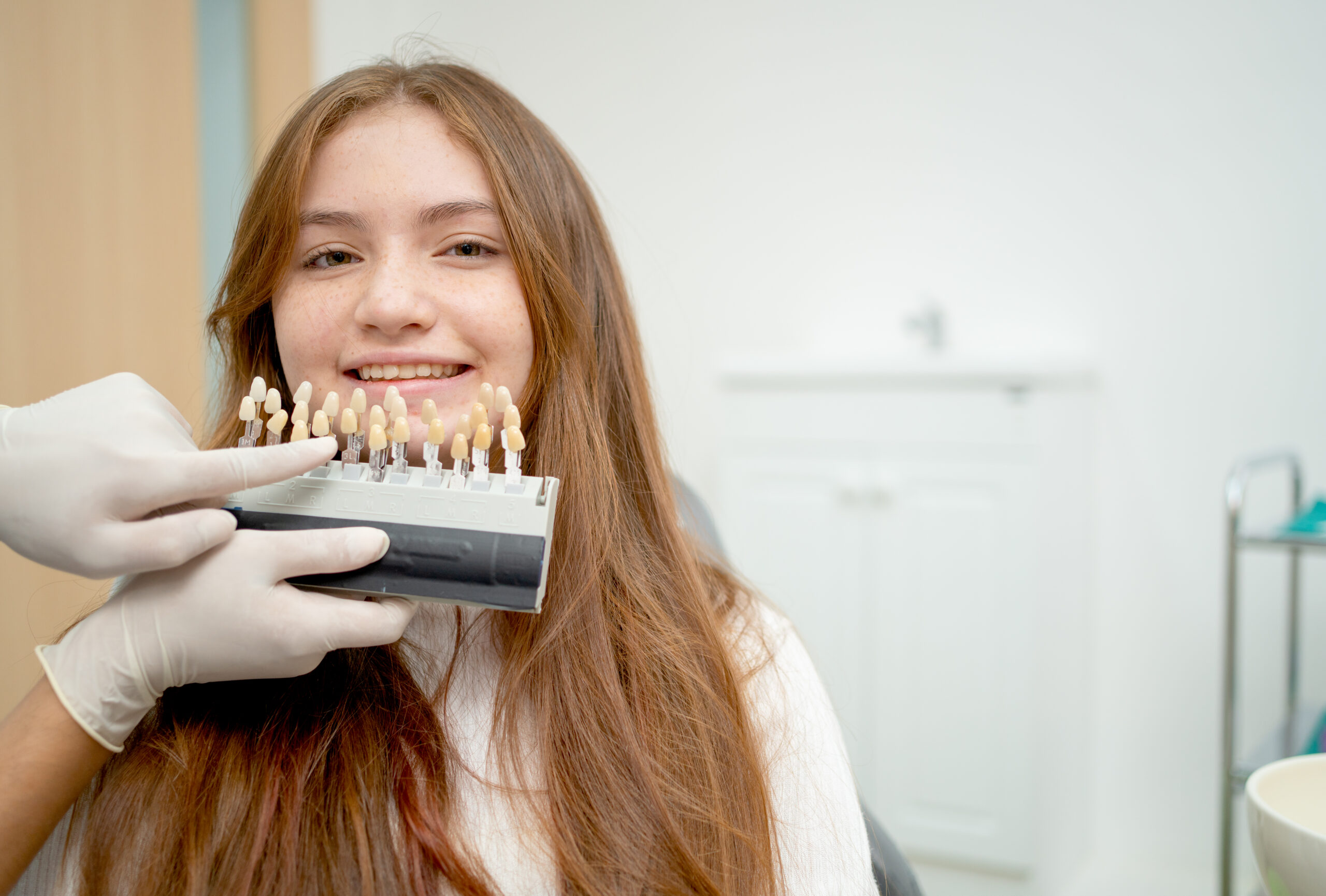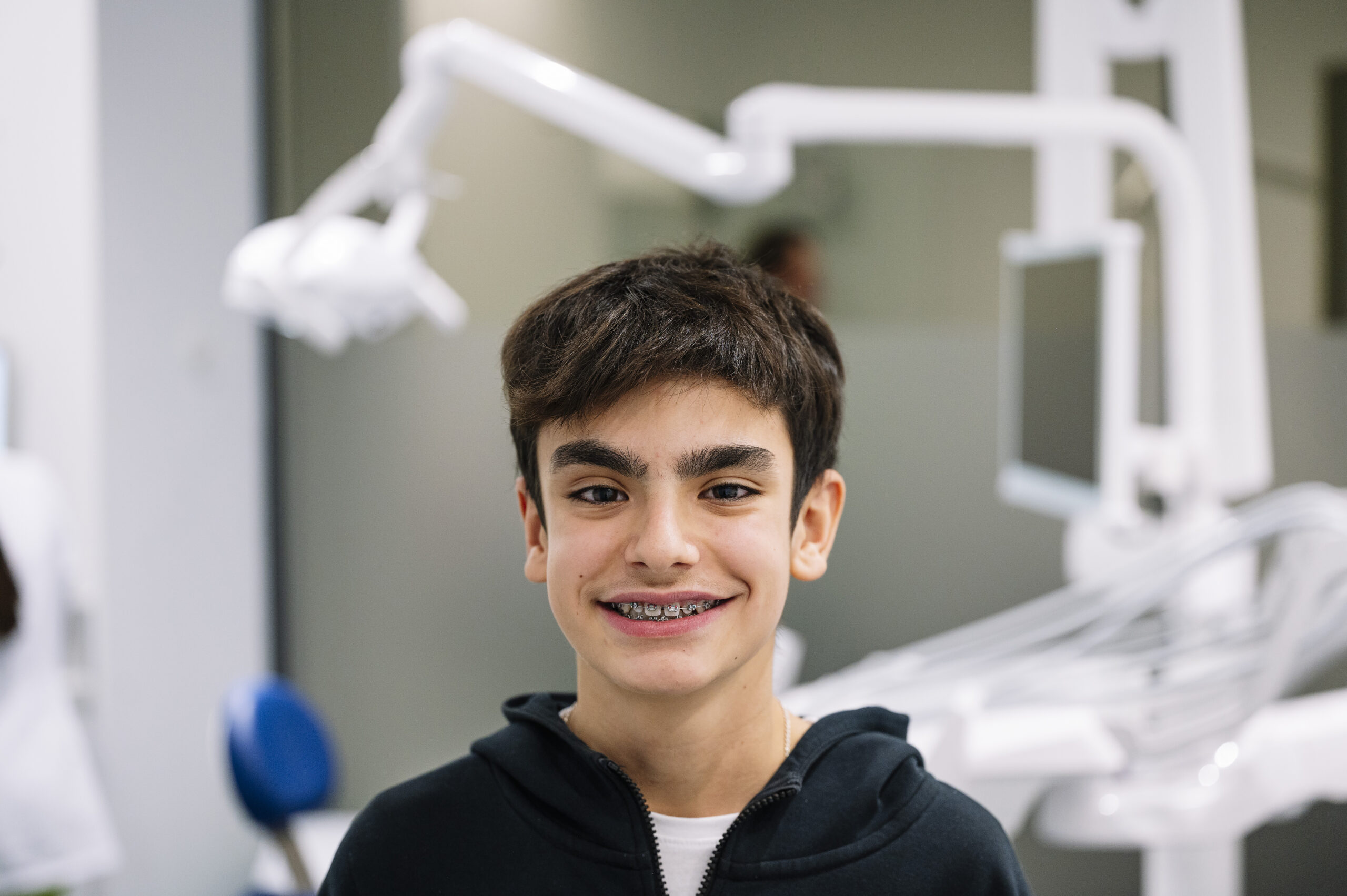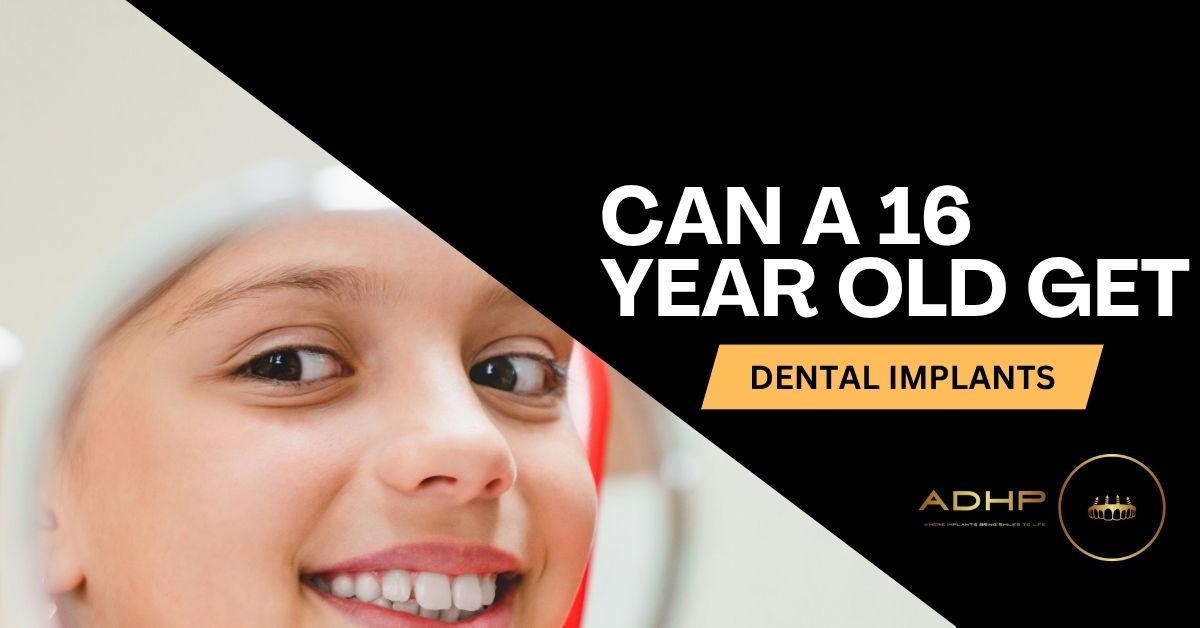Main Takeaways:
- Dental implants are typically not recommended for 16-year-olds because jaw growth is still ongoing.
- Placing an implant too early can cause misalignment or bite issues as the jaw continues to develop.
- Dentists evaluate bone growth, oral health, and lifestyle before approving implants for teens.
- Temporary options such as partial dentures, bonded bridges, or retainers with false teeth are safe interim solutions.
- Waiting until jaw development is complete, usually around age 18 for girls and 20 for boys, ensures long-term implant success.
- The emotional and social impact of missing teeth is significant, so aesthetic temporary options can support confidence.
- Collaboration between orthodontists and implant specialists helps preserve space for future implants.
- Professional evaluation at clinics like ADHP Fallbrook ensures a personalized plan for both short-term and long-term oral health.
Tooth loss is not something most people associate with teenagers, yet it happens more often than you might think. Whether caused by sports injuries, accidents, congenital conditions, or severe tooth decay, missing teeth can have a major impact on a teen’s confidence, speech, and ability to chew properly. Parents who face this situation often ask an important question: can a 16 year old get dental implants?
The answer is not as straightforward as yes or no. Dental implants are widely considered the gold standard for replacing missing teeth in adults, but for younger patients, timing, bone development, and oral health all play a critical role in whether implants are appropriate. In this article, we’ll explore the details of dental implants for teens, compare them to other treatment options, and explain what families should consider when planning long-term dental care.
What Are Dental Implants?
A dental implant is a small titanium post that is surgically placed into the jawbone to act as an artificial tooth root. Once healed, a crown, bridge, or denture can be attached to restore the appearance and function of a natural tooth. Because implants fuse directly with the jawbone, they provide strength, stability, and longevity that other tooth replacement options often cannot match.
For adults, implants are considered the most reliable and durable option available. They prevent bone loss, protect surrounding teeth, and restore full biting power. However, these benefits depend on healthy, fully developed jawbone structures, which is where age becomes a critical factor for teens.
Can a 16 Year Old Get Dental Implants?
The short answer is usually not recommended until growth is complete. At age 16, many teenagers are still experiencing jaw and facial development. Placing an implant too early may cause complications because the implant will not move or adjust as the natural bone and teeth continue to grow.
For example, if a permanent implant is placed in a jaw that is still developing, the implant could end up looking shorter than neighboring teeth or appear misaligned over time. This can lead to aesthetic concerns, bite problems, and the need for corrective treatment later.
That said, there are exceptions. Some 16-year-olds may have completed most of their facial growth, particularly girls, whose bone development typically finishes earlier than boys. In rare cases, with careful evaluation and diagnostic imaging, a dentist or oral surgeon may approve implant placement.
Factors Dentists Consider Before Recommending Implants for Teens
When parents ask can a 16 year old get dental implants, dental professionals carefully evaluate several factors before making a decision:
- Jawbone Growth Stage – X-rays and 3D imaging help determine if the jaw has finished growing.
- Overall Oral Health – Healthy gums and teeth are essential for implant success.
- Reason for Tooth Loss – Whether the tooth was lost from trauma, decay, or genetics influences the treatment plan.
- Bone Density – Sufficient bone volume is required to support the implant.
- Patient’s Habits – Teens who grind their teeth, smoke, or neglect oral hygiene may not be good candidates.
Alternative Options for Teen Tooth Replacement
While permanent implants may not be ideal at 16, several temporary or transitional solutions can restore a teen’s smile until they are old enough for implants. These include:
Removable Partial Dentures
A removable appliance that fills in the missing tooth gap. Though less stable than implants, partial dentures are affordable and easy to adjust as the teen grows.
Dental Bridges
A bridge uses surrounding teeth to support an artificial tooth. While more secure than a removable denture, bridges can put stress on healthy neighboring teeth and may need replacement over time.
Maryland Bonded Bridge
A conservative type of bridge that attaches to the back of adjacent teeth with minimal enamel removal. It’s often used as a temporary option for young patients.
Temporary Implants (Mini Implants)
Mini implants may sometimes be used as placeholders, particularly in orthodontic treatment, though they are not intended as permanent replacements in teens.
Why Waiting Matters: The Importance of Bone Development
The jawbone continues to grow and change shape throughout the teenage years. If a dental implant is placed too early, the surrounding bone may continue developing while the implant remains fixed in place. This mismatch can result in misalignment, gaps, or even implant failure.
By waiting until growth is complete—typically around age 18 for girls and 20 for boys—dentists can ensure the implant integrates properly and functions for decades without complications.

The Psychological Impact of Missing Teeth in Teens
While the biological considerations are important, the emotional and social effects of missing teeth should not be overlooked. Teenagers often feel self-conscious about their appearance, and a missing tooth can affect confidence in school, sports, and social settings.
Temporary solutions such as partial dentures or bridges not only restore function but also help maintain a teen’s self-esteem until they are old enough for permanent implants. Parents should consider both the short-term emotional needs and long-term oral health outcomes when choosing a treatment plan.
Cost Considerations: Implants vs. Alternatives
Dental implants are an investment. For adults, their durability and ability to prevent bone loss make them cost-effective over time. However, when placed too early in teens, implants may require revision or replacement later, which increases long-term costs.
Temporary solutions like partial dentures or bridges may be less expensive upfront, but they may need frequent replacement or adjustments as the teen continues to grow. Families should weigh both the financial and health implications when deciding how to proceed.
Role of Orthodontics in Teen Tooth Replacement
Orthodontics often plays a major role in planning implants for young patients. If a teen is already undergoing orthodontic treatment, the orthodontist and implant specialist may work together to preserve space for a future implant. This ensures the alignment of surrounding teeth and helps create the ideal conditions for implant placement once the teen reaches maturity.
For example, orthodontic retainers may include a false tooth to maintain aesthetics while also holding space for the eventual implant. This coordinated approach allows families to plan for a permanent solution without rushing into treatment prematurely.
How Parents Can Support Teens Missing Teeth
Parents have a big role in helping their child manage both the practical and emotional challenges of tooth loss. Some ways to support include:
- Encouraging open communication about how the teen feels about their smile
- Scheduling regular dental visits to monitor bone growth and oral health
- Exploring temporary replacement options that maintain function and appearance
- Educating the teen on the importance of good oral hygiene to prepare for future implants
By being proactive, parents can help ensure their child has both immediate support and long-term oral health success.
When Is the Right Time for Implants After Age 16?
Most dentists recommend waiting until growth is complete, but the exact timing depends on the individual. Girls may be ready as early as 17 or 18, while boys may need to wait until 19 or 20.
Regular check-ups and imaging allow dentists to track bone development and determine the optimal time for implant placement. By waiting until the right moment, families can avoid complications and ensure the implant lasts for decades.
Making the Right Choice for Teenage Dental Implants
When it comes to a question as important as can a 16 year old get dental implants, the answer isn’t always simple. Every teenager’s oral health, growth stage, and lifestyle are unique, and these factors play a major role in determining whether implants are the right option now or later. For many families, waiting until growth is complete provides better long-term stability. Others may explore temporary solutions until the time is right.

Expert Guidance from ADHP Fallbrook
If you’re considering dental implants for your teenager, the best step you can take is to consult with a specialist who understands both the science and the artistry of implant dentistry. At ADHP Fallbrook, our team evaluates bone growth, bite alignment, and long-term oral health goals before recommending a treatment plan. We’ll help you make an informed decision that protects your teen’s smile today while setting them up for a lifetime of confidence.
Call ADHP Fallbrook today to schedule a consultation and learn the best options for your child’s dental health.




